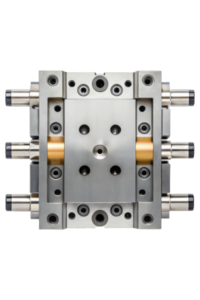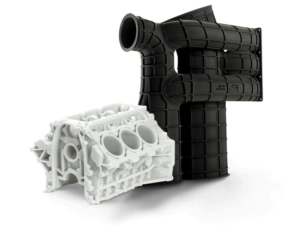By: John Sidorowicz
Injection molding is a manufacturing process that involves injecting molten material, such as plastic or metal, into a mold cavity to produce parts with complex shapes. Both aluminum and steel are commonly used in injection molding, but aluminum has several advantages that make it a better choice in certain applications.
One of the main advantages of using aluminum in injection molding is its low density. Aluminum has a density of only about one-third that of steel, which means that it is much lighter in weight. This can be especially important in applications where weight is a critical factor, such as in the automotive and aerospace industries. Using aluminum instead of steel can significantly reduce the weight of a finished part, which can improve fuel efficiency and performance.
Another advantage of aluminum is its high thermal conductivity. Aluminum is an excellent heat conductor, which means it can transfer heat quickly and efficiently. This can be beneficial in injection molding, as it allows for faster cooling of the molded parts. Faster cooling can lead to shorter cycle times and higher production rates, which can be important in high-volume manufacturing operations.
In addition to its low density and high thermal conductivity, aluminum also has excellent corrosion resistance. It is resistant to many types of corrosive environments, including saltwater and acidic environments. This can be especially important in applications where the finished parts will be exposed to harsh conditions, such as in the marine or chemical processing industries.
One potential disadvantage of using aluminum in injection molding is its relatively high cost. Aluminum is typically more expensive than steel, which can be a concern for manufacturers on a tight budget. However, the benefits of using aluminum often outweigh the cost, especially in applications where weight, thermal conductivity, and corrosion resistance are important factors.
In summary, aluminum is a better choice than steel for injection molding in many applications due to its low density, high thermal conductivity, and excellent corrosion resistance. While it may be more expensive than steel, the benefits of using aluminum often justify the cost, especially in applications where weight and performance are critical factors.


